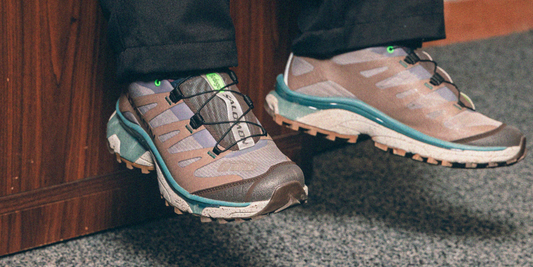The boast of heraldry, the pomp of power
And all that beauty, all that wealth ever gave,
Awaits alike the inevitable hour.
The paths of glory lead but to the grave. – Thomas Gray Elegy in a Country Churchyard
Ever since the earliest, primeval human minds could remotely grasp the concept of death, death has utterly transfixed human consciousness. When the absolute permanence of death is weighed against the comparative fragility of human existence, this is a fair enough state of affairs. Add in the fact that so many of the contrivances of mortality were simply beyond antediluvian human comprehension, and the notion of death as an actual, hovering specter could only grow more prominent and more powerful in the collective imagination of humanity.
That death and any sort of accompanying post-physical existence would be governed by some semblance of order was an especially comforting idea, making death deities like Hel, Yama, Anubis and Thanatos, prominent figures in the pantheons of every ancient religion, but even the most fearsome temperaments among these entities would fall into the category of dutiful servants, enforcing a set of rules, rather than death itself.
Personifying death itself is another matter. The nature of death and dying as it intrudes upon day-to-day life is a much grimmer affair than it appears in stories of weighing hearts against feathers or crossing the river Styx, making it appropriate that the most famous and commonplace representation of death in corporeal form is the figure of the Grim Reaper. Usually a cloaked, scythe-wielding skeleton, the grim reaper is, generally speaking, a more detached figure, simply coming to collect an item. Separated from the dictates of various theological doctrines about death and the afterlife, the Grim Reaper’s selection process takes on a morbidly capricious air, especially during periods of human history where being young, whole, and healthy one day was no guarantor against an immanent voyage to the grave.
What unites all the portrayals of death across cultures and time is the same thing that unites all people past, present, and future as a fact of life. Death is universal and inexorable. Everyone is going to die, and everyone means everyone. The king and the pawn will be swept off the board in the end, without distinction between the two.
Thanks to the collective technological and scientific achievements of human civilization, the grim reaper no longer lingers over every sniffle and cough. Somewhat paradoxically, the increased lifespans of the modern era have made the concept of death personified less immediate, but more powerful. The skeletal hands of the reaper may not be able to grab hold quite so easily, but the inability to conquer death completely, or, at least, unravel its mysteries, have lent a more ominous air to the proceedings.
There is more breathing room between the average person and death than ever before. So much, in fact, that even mentioning the universal and inexorable nature of mortality has come to be seen as needlessly morose. But the fact remains.
Of course, precious few people tend to actively spend their days pondering their inevitable expiration date. Many, if not most, people need a gentle reminder that their time upon this mortal coil is fleeting, hence the memento mori. A metaphorical portrayal of the inexorability of death, a memento mori is a work of art that actively reminds the viewer that they have not been granted a special dispensation from the workings of life and death.
The GEL-MAI is a thoroughly late 1990s tech design, a notable departure from familiar Asics classics like the Gel Lyte III or V. The upper is one piece, with a totally external, asymmetrical lacing structure, with the standard Tiger stripes relocated to a two- dimensional logo on the midsole, towards the heel of the shoe.
Choosing a techy, performance model deliberately suggests the dynamism of human movement, and the skeletal structure as the foundation of this physical vitality. Even the colorway recalls the athletic roots of the GEL-MAI more than it does a creepy cemetery.
By presenting the skeletal imagery in anatomical form, the skeleton is presented as two sides of one coin, as an agent of motion and mortality; It is a visual representation of the juxtaposition between one of the most vibrant cities in the world, and the legions of human bones beneath its streets.
The more universal message is that no matter who you are, or what journeys you take in life, everyone ends up as a skeleton in the end.
The Bodega x Asics GEL-MAI ‘Underground’ releases Friday, June 23rd at 11:00am EST exclusively at Bodega and bdgastore.com. Each pair comes with custom packaging and lace options – retail is set at $170.
















Talent: Sylvain Lewis / Kevin Sparker / Marco / Manast LL
Written: Dan Alvarez






